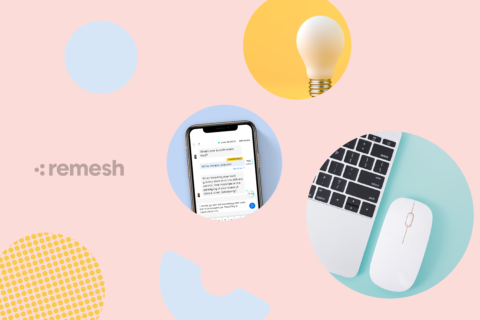Behavioural Tech-heads is a monthly series on Research World looking into what the technology industry can learn from behavioural science. It will cover the biases – both cognitive and behavioural – and psychological principles that offer the greatest contribution to the tech industry.
Endowment Effect
In this instalment of Behavioural Tech-heads we’ll be looking at the endowment effect.
What’s it all about?
The endowment effect is a bias in value judgement, where we place more value on something if it belongs to us than we would if the exact same thing belonged to someone else.
A quick detour
To understand the endowment effect, it’s important to first understand loss aversion. Loss aversion refers to the finding that we dislike losses roughly twice as much as we like gains of equivalent value. In concrete terms, losing £1 is as negative an experience as gaining £2 is positive.
Loss aversion helps us understand why the endowment effect occurs. Once we gain ownership of an item, some arbitrary value is added to it, as to lose that item would be twice as painful as the acquisition of it was pleasant. It’s important to note that the endowment effect will still be in play even when the ‘endowed’ item isn’t truly owned. It requires only the perception of ownership to alter the value judgement.
The endowment effect at work
The most famous demonstration of the endowment effect came from an experiment in which half of participants were given a chocolate bar, and the other half a coffee mug (of equivalent value), as thanks for their efforts in an unrelated task. They were then given the opportunity to swap their reward for the alternative. A third (control) group simply chose either the chocolate or the mug. Member of the control group demonstrated a near 50/50 split in their choices, suggesting that roughly 50% of the experimental group would want to swap their reward. However, this wasn’t the case. Most participants (~90%) opted to stick with what they were given – demonstrating their elevated valuation of the reward they received over the one they didn’t.
An everyday example of the endowment effect at work is hoarding. People cling onto what they own as their subjective value judgement of it far exceeds any objective value it has (spoiler: it’s often £0, or -£ when it needs to be taken to the dump).
How are retailers using it?
This bias in value judgement is already frequently used in retail. Changing rooms aren’t just for the customer’s benefit, they help boost sales. When we try clothes on, we see how we look & feel in them – we get a taste of owning them. After this taste of ownership, we don’t want to lose them. So, unless we objectively don’t like the items, we’ll be more likely to buy them to avoid ‘losing’ them.
Just touching an item makes a feel some degree of ownership. Although folded, rather than hung, clothes may be a nightmare for staff, there’s a good reason behind this set-up. When clothes are folded, they must be picked up to seen properly. All other things equal, the folded clothes will be more likely to be bought thanks to the endowment effect.
Loyalty cards employ the endowment effect by the promise of ownership. This promised ownership is what propagates brand loyalty via the cards. The endowment effect aids subscription products/services too, as ownership becomes the norm via regular payments. We’re therefore reluctant to discontinue these payments so as to avoid the loss of ownership.
What’s the importance for the tech industry?
- Free trials – many tech brands already exploit the endowment effect via free trials. When participating in a free trial, you have temporary ownership over that product or service. As the free trial comes towards the end, customers are faced with the potential loss of ownership and are therefore more likely to pay for it.
- Instore trials – whether it’s watching a nature programme on a massive high-spec TV, trying out a new gaming console or playing with the latest iPhone, in-store trials allow the customer to sample ownership, eliciting the endowment effect. Apple store staff are specifically told not to pressure anyone to leave the store, allowing the store itself to foster a sense of belonging.
- The role of VR/AR – the stricter hygiene regulations & routines that have been established in response to the COVID-19 pandemic mean that utilisation of the endowment effect via tactile interaction is likely to remain limited for some time. Some retailers have set-up VR/AR technology which allows customers to ‘try on’ clothes, accessories, make-up, hair dyes and more. VR tasters of ownership boost sales and reduce return rates.
- Avoiding the ads – most free music or video streaming platforms offer paid-for premium accounts which allow the user an ad-free experience. Often combined with a free trial of the premium account, there’s very little motivation to go back to the free version after experiencing the service ad-free.
- Conditional rewards – successful apps keep users logging in via the endowment effect with the promise of rewards for continued log-ins. These rewards need not even be material – “Snapstreaks” on Snapchat and daily practise streaks on Duolingo both play on this.
- Crypto investments – the endowment effect can have a particularly strong influence when it comes to the ownership of an asset with varying value. In the absence of a static, objective valuation of an investment, the endowment effect bares even fewer limits on one’s subjective value judgement. The fallout of this, is that people refuse to pull out of their investment despite declining returns and thereby lose money.


